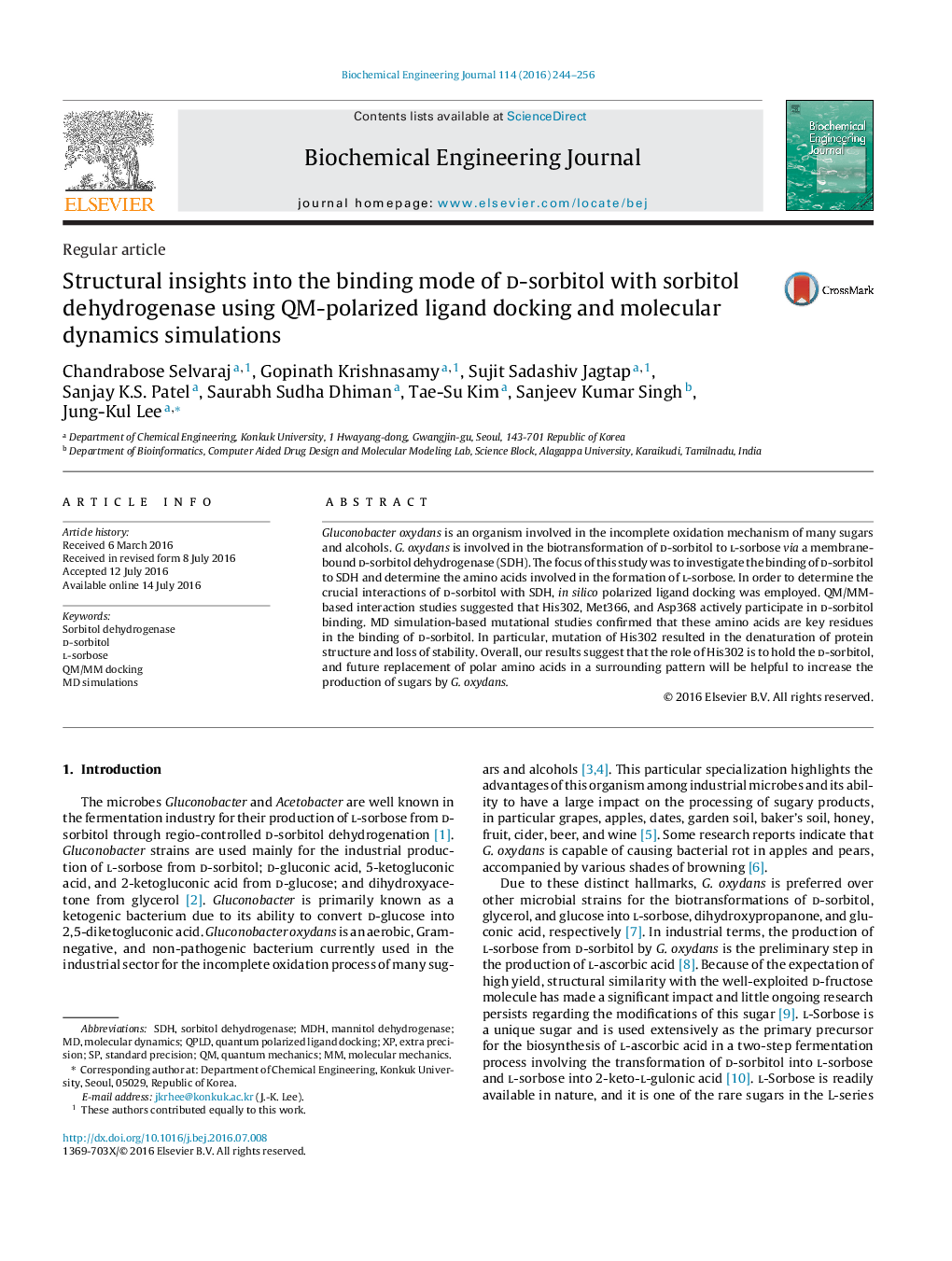| Article ID | Journal | Published Year | Pages | File Type |
|---|---|---|---|---|
| 2695 | Biochemical Engineering Journal | 2016 | 13 Pages |
•Computational approaches were applied to gain an insight into the binding of d-sorbitol to sorbitol dehydrogenase.•QM/MM-based interaction studies suggested amino acids actively involved in d-sorbitol binding.•Replacement of Met366 and Asp368 will be helpful to increase l-sorbose production.
Gluconobacter oxydans is an organism involved in the incomplete oxidation mechanism of many sugars and alcohols. G. oxydans is involved in the biotransformation of d-sorbitol to l-sorbose via a membrane-bound d-sorbitol dehydrogenase (SDH). The focus of this study was to investigate the binding of d-sorbitol to SDH and determine the amino acids involved in the formation of l-sorbose. In order to determine the crucial interactions of d-sorbitol with SDH, in silico polarized ligand docking was employed. QM/MM-based interaction studies suggested that His302, Met366, and Asp368 actively participate in d-sorbitol binding. MD simulation-based mutational studies confirmed that these amino acids are key residues in the binding of d-sorbitol. In particular, mutation of His302 resulted in the denaturation of protein structure and loss of stability. Overall, our results suggest that the role of His302 is to hold the d-sorbitol, and future replacement of polar amino acids in a surrounding pattern will be helpful to increase the production of sugars by G. oxydans.
